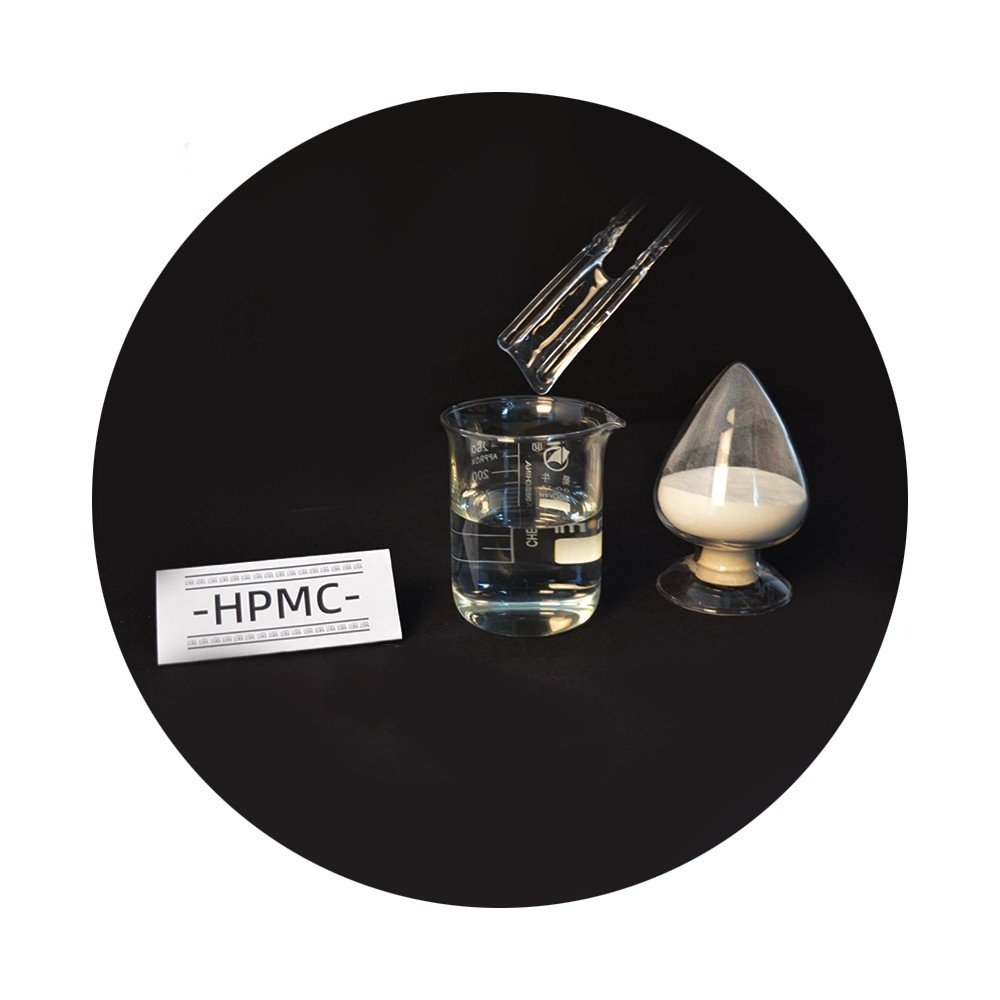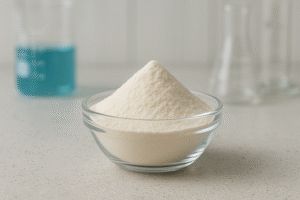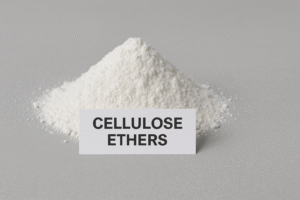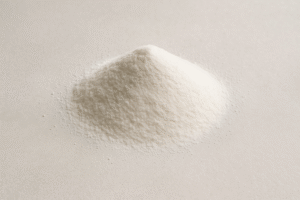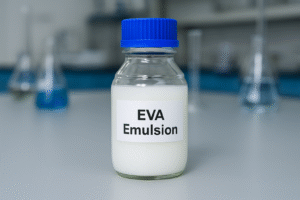Are you working with construction materials but unsure about what's in HPMC? Many clients come to us confused about the composition of this crucial additive. Understanding its ingredients is essential for quality control and proper application.
HPMC (Hydroxypropyl Methylcellulose)1 is made from natural cellulose that undergoes chemical modification. The main ingredients are cellulose from plant sources, sodium hydroxide, methyl chloride, and propylene oxide. These components react to create a versatile polymer used in construction, pharmaceuticals, and food products.
When I first started manufacturing HPMC at our factory in China, I spent months researching the perfect ingredient formulation. This knowledge has helped our clients in Saudi Arabia, UAE, and across Asia make informed decisions about their construction projects. Let me share what I've learned about HPMC's composition.
What is HPMC made of?
Many mortar manufacturers worry about inconsistent product quality. The
root cause often traces back to not understanding what HPMC is actually made from. Having the right information can save you thousands in production costs.
HPMC is made from cellulose extracted from wood pulp or cotton fibers. This natural cellulose undergoes treatment with sodium hydroxide (alkali), followed by reactions with methyl chloride and propylene oxide. These reactions substitute hydroxyl groups on the cellulose chain, creating the final HPMC polymer.
The manufacturing process of HPMC involves several precise steps. First, we treat natural cellulose with concentrated sodium hydroxide (18-50%) at temperatures between 20-30°C. This step activates the cellulose by breaking hydrogen bonds and making it more reactive. We call this "alkali cellulose."
Next comes the etherification stage where methyl chloride reacts with alkali cellulose to introduce methyl groups (-CH₃). Following this, propylene oxide is added to introduce hydroxypropyl groups (-CH₂CH(OH)CH₃). The ratio of these reagents determines the final properties of HPMC.
At our factory in China, we carefully control these ratios based on the specific application requirements. For example:
| Application | Methyl Substitution | Hydroxypropyl Substitution | Viscosity Range |
|---|---|---|---|
| Tile Adhesive | 27-30% | 4-7.5% | 15,000-75,000 mPa·s |
| Rendering Mortar | 28-32% | 7-12% | 25,000-100,000 mPa·s |
| Wall Putty | 28-30% | 4-12% | 30,000-150,000 mPa·s |
After the chemical reactions, the product undergoes washing, purification, drying, and grinding to produce the final HPMC powder that our clients use in their formulations.
Is HPMC safe for humans?
Customers often ask me about safety when handling HPMC. This concern is valid, especially for workers regularly exposed to the material. Not knowing the safety profile could lead to unnecessary protective measures or worse, inadequate ones.
HPMC is generally recognized as safe (GRAS) by the FDA. It's non-toxic, non-irritating, and non-allergenic for most people. HPMC has been safely used for decades in pharmaceuticals, food products, and cosmetics. In construction applications, it presents minimal health risks when handled according to standard industrial hygiene practices.

I've personally overseen the safety testing of our HPMC products2 to ensure they meet international standards. The LD50 (median lethal dose) for oral consumption in rats is greater than 5000 mg/kg of body weight, indicating very low toxicity. In the 25 years we've been manufacturing HPMC, we've never had a reported case of significant adverse health effects.
HPMC's safety profile comes from its chemical stability and biological inertness. Once synthesized, the ether bonds in HPMC are quite stable and resist breaking down into harmful compounds. When used in construction materials like mortars, renders, and paints, HPMC becomes part of the matrix and doesn't typically release harmful substances.
For workers handling pure HPMC powder, standard dust precautions are recommended:
| Protective Measure | Recommendation | Reason |
|---|---|---|
| Respiratory Protection | N95 mask | Prevents inhalation of fine dust |
| Eye Protection | Safety glasses | Prevents eye irritation |
| Skin Protection | Gloves | Reduces skin contact |
| Ventilation | Good airflow | Minimizes dust concentration |
These precautions are standard industrial hygiene practices rather than specific safety concerns with HPMC itself. Once the HPMC is mixed into wet mortar or paint, these concerns are eliminated.
What does hydroxypropyl methylcellulose3 do to the body?
One client from India was concerned about his workers breathing HPMC dust. He feared unknown health effects after long-term exposure. This kind of worry comes from not understanding how HPMC interacts with biological systems.
When ingested, HPMC passes through the digestive system largely unabsorbed. It's not metabolized and doesn't accumulate in organs or tissues. HPMC can absorb water in the digestive tract, which is why it's used as a bulk-forming laxative in some medications. For construction workers, incidental exposure through skin or inhalation presents minimal risks.

I've studied hundreds of safety data sheets and research papers on HPMC's biological interactions. The findings are consistently reassuring. HPMC is chemically inert in biological systems, meaning it doesn't readily react with tissues or cellular components.
If HPMC dust is inhaled, the body's respiratory defense mechanisms work to clear it from the airways. The mucociliary escalator (tiny hair-like structures) moves particles trapped in mucus upward to be swallowed or expelled.
Larger particles are trapped in the upper airways, while very fine particles that reach the lungs are handled by macrophages (specialized immune cells).
For better understanding, here's how HPMC compares to other construction chemicals:
| Substance | Biological Activity | Health Concern Level |
|---|---|---|
| HPMC | Biologically inert | Very low |
| Portland Cement | Caustic, can cause burns | Moderate to high |
| Silica Dust | Can cause silicosis | High |
| Acrylic Polymers | Generally inert | Low |
| Isocyanates | Can cause sensitization | High |
This comparison shows why HPMC is preferred in many applications - it provides technical benefits without introducing significant health risks. At our factory, we've invested in advanced dust collection systems not because HPMC is dangerous, but because good industrial hygiene benefits everyone regardless of the material being handled.
What is hydroxypropyl methylcellulose ingredient?
New distributors often wonder what exactly makes up the HPMC powder they're buying. This confusion can lead to misapplication or incorrect storage, potentially wasting valuable product or compromising construction quality.
Hydroxypropyl methylcellulose is a modified cellulose ether ingredient containing methoxy groups (-OCH₃) and hydroxypropoxy groups (-OCH₂CH(OH)CH₃) attached to a cellulose backbone. The precise composition includes 19-30% methoxyl content and 3-12% hydroxypropoxyl content, depending on the grade. The remaining structure is the original cellulose chain.

In my 20 years working with HPMC, I've found that understanding its molecular structure helps clients select the right grade for their application. The cellulose backbone gives HPMC its basic film-forming and binding properties.
The methoxyl groups provide hydrophobicity (water resistance), while the hydroxypropoxyl groups enhance solubility and flexibility.
The exact ratio of these chemical groups determines the performance characteristics of HPMC. We manufacture different grades with various substitution ratios:
| HPMC Type | Methoxyl Content | Hydroxypropoxyl Content | Key Properties | Best Applications |
|---|---|---|---|---|
| Low-Substituted | 19-24% | 4-12% | Higher gel temperature, better workability | Tile adhesives |
| Medium-Substituted | 25-27% | 4-12% | Balanced properties | General mortars |
| High-Substituted | 28-30% | 3-5% | Lower gel temperature, quick dissolution | Self-leveling compounds |
The molecular weight of HPMC4 also varies between grades, typically ranging from 10,000 to 1,500,000 Daltons. Higher molecular weights create higher viscosity solutions.
For example, our HPMC-100000 grade creates a significantly more viscous solution than our HPMC-15000 grade when used at the same concentration.
Besides the active HPMC polymer, commercial HPMC powder may contain trace amounts of:
- Sodium chloride (by-product of synthesis)
- Unreacted starting materials (<0.1%)
- Moisture (typically 3-5%)
These trace ingredients don't significantly affect performance in construction applications but may be important considerations for pharmaceutical or food applications.
Conclusion
HPMC is a modified natural polymer made from cellulose with methyl and hydroxypropyl groups added. It's safe for human contact, passes through the body without absorption, and contains precisely engineered ratios of chemical groups to deliver specific performance benefits.
-
Explore this link to understand the diverse applications and benefits of HPMC in various industries, enhancing your knowledge for better decision-making. ↩
-
Explore this link to understand the safety standards and regulations that govern HPMC products, ensuring their safe use in various applications. ↩
-
Discover how hydroxypropyl methylcellulose interacts with the body and its applications in medicine and construction. ↩
-
The molecular weight of HPMC influences its viscosity and performance, making it essential to understand for effective use in formulations. ↩

